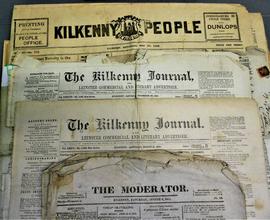- IE CA KK/2/1/1/1
- Part
- 1785-1953
Part of Irish Capuchin Archives
This section relates to two houses on Walkin Street which were formerly known as the Munster Arms. A Kilkenny newspaper, 'Finn’s Leinster Journal' (18 July 1770), included an article which referred to an old Inn known as 'The Munster Arms' on Walkin Street. The plot of ground on which this building stood was situated opposite the existing Capuchin Friary on Walkin Street. The buildings were purchased by the Capuchins in 1896 and part of the Munster Arms’ site was given over to Bishop Abraham Brownrigg in lieu of an alms house or charitable institution which was located on the opposite, Friary side of Walkin Street and which was subsequently demolished and incorporated into the existing Friary building (see CA KK/2/1/1/1/15). One of the above-mentioned houses on the Munster Arms site was retained and let to a tenant in order to meet the annual rent of £13 7s 8d on the property (see CA KK/2/1/1/2/5). The section includes deeds with numerous references to the historic owners of the Munster Arms and Alms House sites on Walkin Street including the Colles and Empson families. It is likely that part of Munster Arms site is currently occupied by a property now known as 17 Friary Street which was subsequently sold by the Capuchins (see section 2.1.1.2. below).




